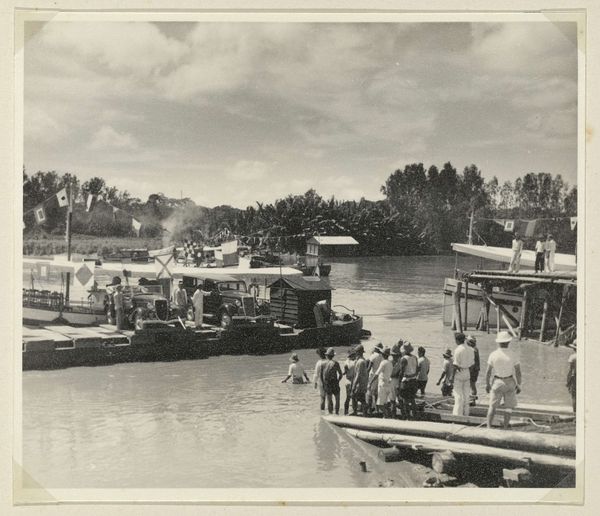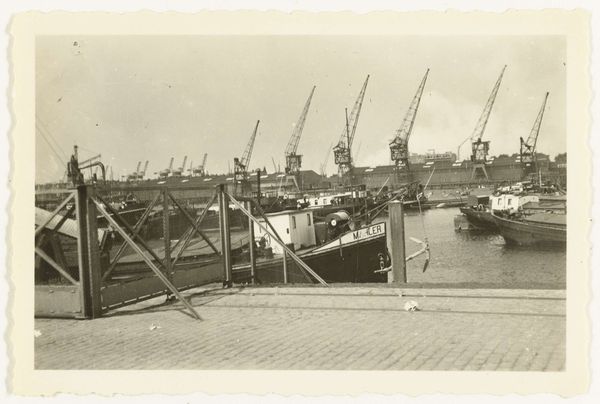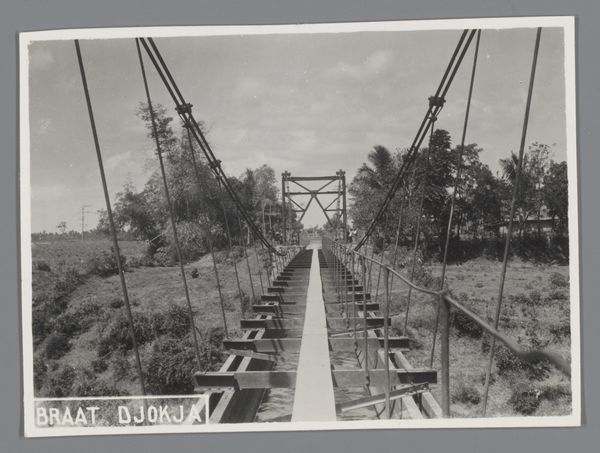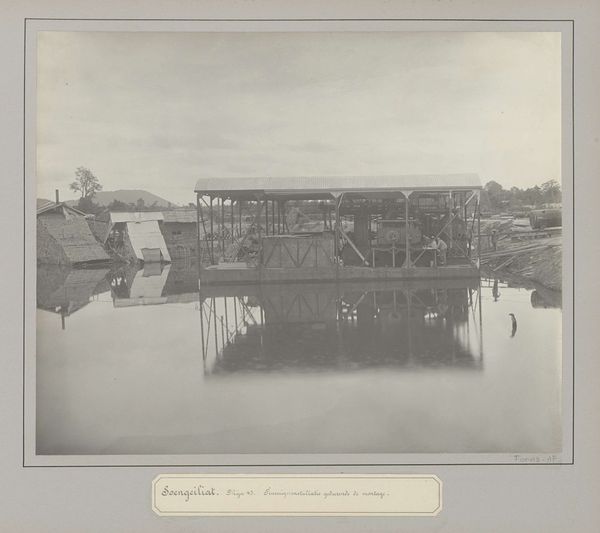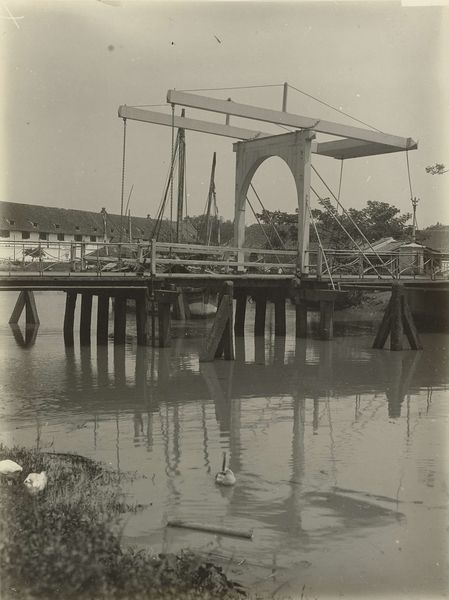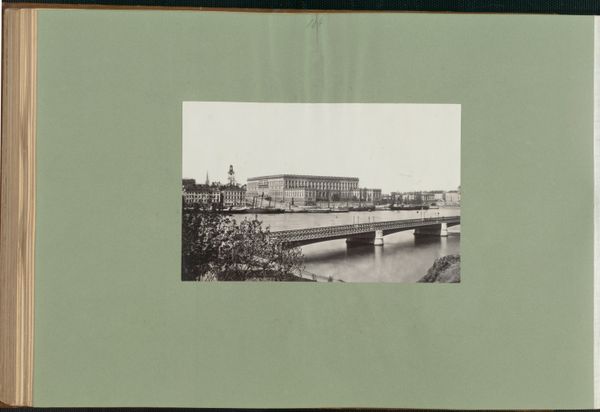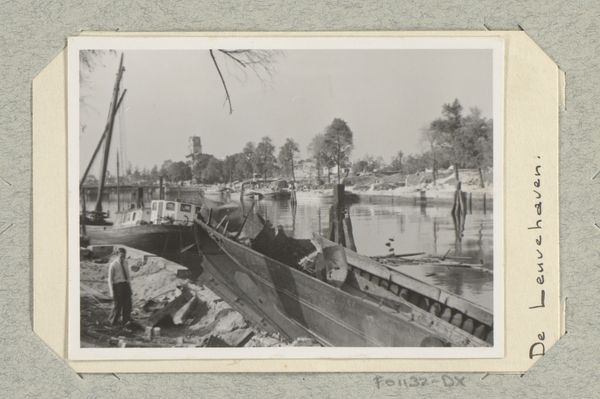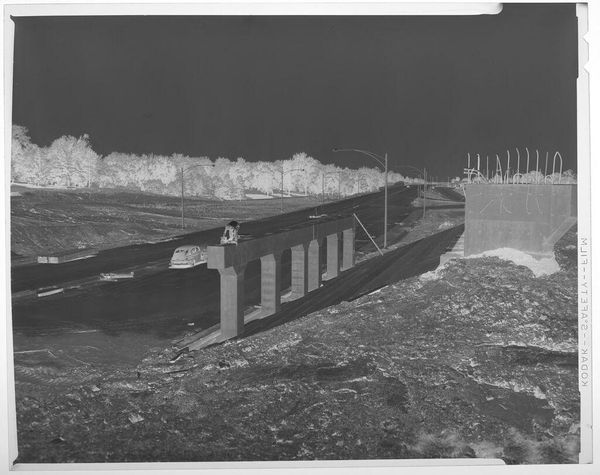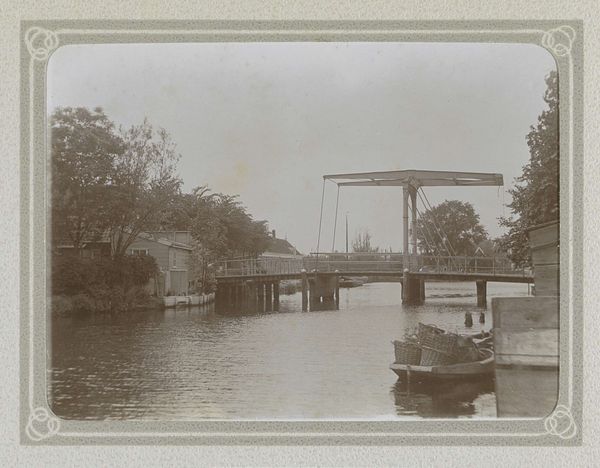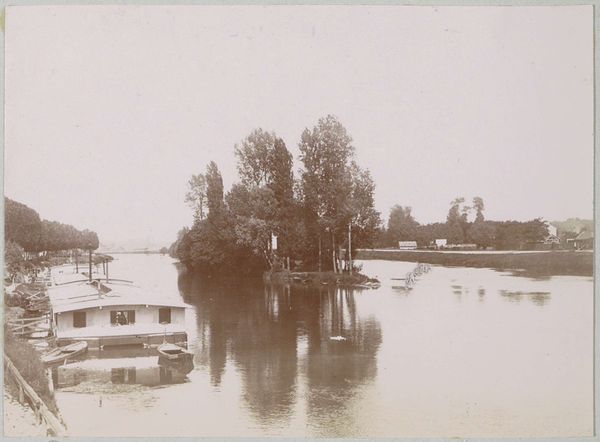
photography
#
photo restoration
#
photography
#
geometric
#
cityscape
#
realism
Dimensions: height 181 mm, width 238 mm
Copyright: Rijks Museum: Open Domain
Curator: Looking at this, I immediately feel transported. There’s something melancholy, yet incredibly powerful about the industrial landscape rendered in this silver gelatin print. It's dreamlike, isn't it? Editor: Absolutely. What strikes me about this anonymous 1940 photograph, titled "Admiraal Ferwerdabrug," is its visual language that celebrates modernity and technological achievement against the backdrop of colonial history. This bridge symbolizes a moment of transformation, an imposition of engineering upon a landscape marked by Dutch presence in Indonesia. Curator: It really does feel like a celebration. I’m particularly drawn to the interplay of geometric forms against the flowing water. It reminds me how stark shapes can still exist within something so fluid, and it gives such interesting energy. There is a fascinating story being told of the meeting between machine and nature. Editor: That tension between machine and nature highlights colonial projects' ambition to master landscapes. But beyond the formal qualities, think about the human cost. This bridge in Surabaya embodies both connection and control. Curator: It’s interesting, this photograph really allows me to experience that feeling of something man-made sitting amongst the raw, that dialogue. And seeing the figures so tiny on this large bridge, it creates a sort of surreal quality, which is why the silver gelatin medium really works to its strengths. It’s more dream, less documentation, do you see what I mean? Editor: I do. But seeing those tiny figures I keep thinking about infrastructure projects. Consider who built the bridge, whose labor was exploited to realize these grand visions? Those small figures represent not only human achievement but also potential inequity. The photo seems deceptively celebratory. Curator: It's a dance, this viewing, isn't it? What do you make of the cloudy sky that covers most of the photograph, because it creates this fascinating gray landscape. Editor: The sky, though seemingly benign, offers an entry into considering the political atmosphere of 1940. It's an ambiance that seems laden with expectation or anxiety as Dutch colonial control faced new threats on the horizon. The photo asks, what stories of progress were suppressed, what voices went unheard amidst the gears and girders? Curator: Exactly, because in every single photo there's always two or more voices that need to be seen. So perhaps it may appear like documentation but at its core it’s a symbol of the conversations being held at that moment, so you start to reflect. Thank you for a wonderfully deep analysis of this wonderful photograph! Editor: Thanks to you. I always learn when different ways of reading images challenge my own. It encourages dialogue on history's ever shifting meanings.
Comments
No comments
Be the first to comment and join the conversation on the ultimate creative platform.

